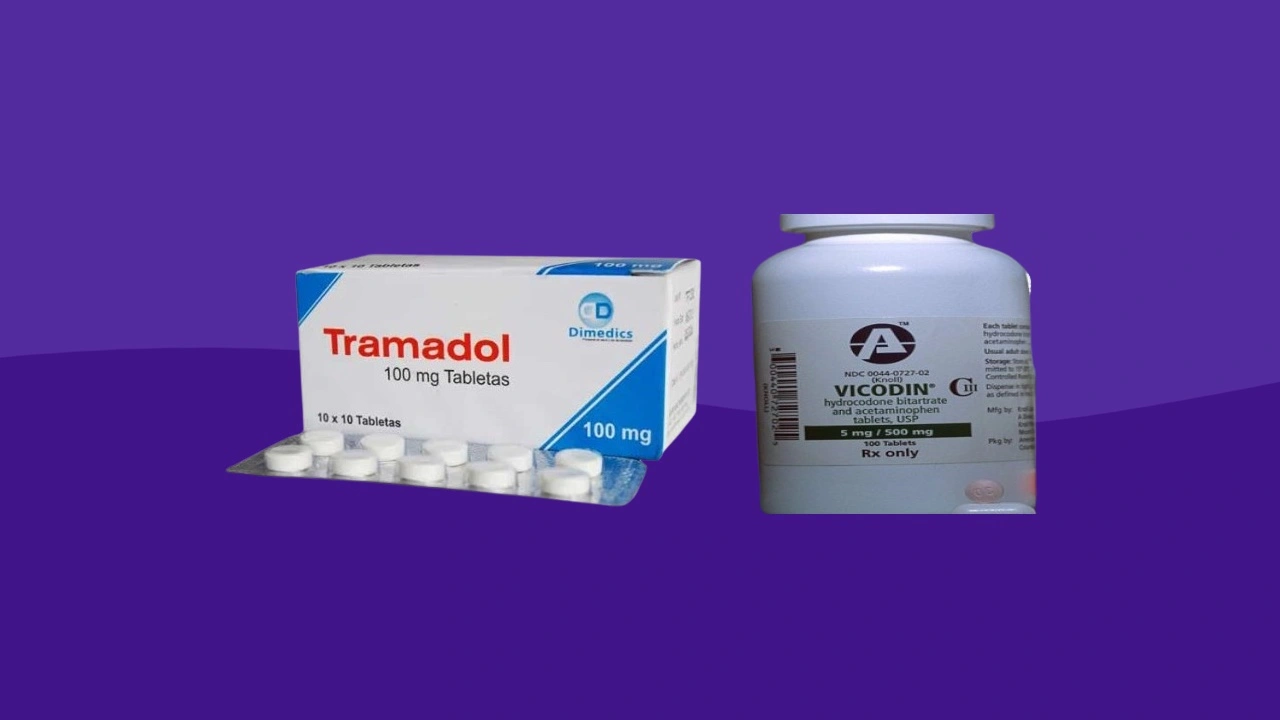Two widely prescribed pain relievers, tramadol and Vicodin (hydrocodone and acetaminophen), have gained popularity for managing moderate to severe pain. However, these medications have distinct characteristics, potential side effects, and considerations that patients and healthcare providers must carefully evaluate.
What is Tramadol?
Tramadol is a synthetic opioid analgesic that works by altering the way the brain and nervous system perceive pain. Unlike traditional opioids, tramadol has a unique mechanism of action that involves binding to specific receptors in the brain and inhibiting the reuptake of neurotransmitters like serotonin and norepinephrine. This dual action contributes to its pain-relieving properties while potentially reducing the risk of some opioid-related side effects.
Vicodin: A Combination of Hydrocodone and Acetaminophen
Vicodin is a combination medication that contains hydrocodone, an opioid analgesic, and acetaminophen, a non-opioid pain reliever and fever reducer. Hydrocodone works by binding to opioid receptors in the brain and spinal cord, reducing the perception of pain. The addition of acetaminophen enhances the pain-relieving effects and allows for lower doses of hydrocodone to be used, potentially reducing the risk of opioid-related side effects.
Prescribing Considerations:
Both tramadol and Vicodin are controlled substances, meaning they are subject to strict regulations and require a valid prescription from a licensed healthcare professional. Vicodin, specifically, is classified as a Schedule II drug due to its high potential for abuse and dependence.
The decision to prescription pain drugs either medication is based on various factors, including the severity of pain, short term pain, potential side effects, and individual patient characteristics such as age, medical history, and potential drug interactions.
Dosage Forms and Strengths:
Tramadol is available in both immediate-release and extended-release formulations, with strengths ranging from 50 mg, 100 mg to 300 mg. Vicodin, on the other hand, is available in various combinations of hydrocodone and acetaminophen, with hydrocodone strengths ranging from 5 mg to 10 mg and acetaminophen strengths ranging from 300 mg to 650 mg.
It is crucial to follow the prescribed dosage instructions carefully and never exceed the recommended daily limit of acetaminophen, as excessive intake can lead to liver damage.
Potential Side Effects:
While tramadol and Vicodin are effective in managing pain, they can also cause side effects. Common side effects associated with tramadol include nausea, dizziness, constipation, and drowsiness. Vicodin, on the other hand, may cause side effects such as respiratory depression, constipation, nausea, and sedation.
Side effects of tramadol may also include serotonin syndrome, especially when combined with certain medications that affect serotonin levels. Vicodin’s side effects can be exacerbated by the acetaminophen component, potentially leading to gastrointestinal discomfort or liver toxicity with prolonged or excessive use.
Both medications carry a risk of dependence and addiction, particularly with prolonged use or misuse.
Withdrawal Symptoms:
Abruptly discontinuing tramadol or Vicodin after prolonged use can lead to withdrawal symptoms. These symptoms may include anxiety, sweating, muscle aches, insomnia, and flu-like symptoms. It is essential to follow a healthcare professional’s guidance when tapering off or discontinuing these medications to minimize the risk of withdrawal symptoms.
Drug Interactions:
Both tramadol and Vicodin have the potential to interact with other medications, which can increase the risk of side effects or alter their effectiveness. It is crucial to inform your healthcare provider about all medications, supplements, and herbal products you are taking to avoid potentially dangerous interactions.
Certain medications, such as antidepressants, anticonvulsants, and other opioids, can increase the risk of serotonin syndrome when combined with tramadol. Vicodin, on the other hand, may interact with medications that affect the liver or central nervous system.
Opioid Overdose:
As with any opioid medication, there is a risk of opioid overdose with Vicodin and tramadol, particularly when misused or combined with other central nervous system depressants. Signs of an opioid overdose may include slowed breathing, confusion, and loss of consciousness.
It is essential to follow dosage instructions carefully, never share or misuse these medications, and immediately seek medical attention if an overdose is suspected.
Tramadol vs Vicodin Comparison:
| Characteristic | Tramadol | Vicodin (Hydrocodone and Acetaminophen) |
| Active Ingredients | Tramadol | Hydrocodone and Acetaminophen |
| Mechanism of Action | Binds to opioid receptors and inhibits neurotransmitter reuptake | Hydrocodone binds to opioid receptors, acetaminophen enhances pain relief |
| Controlled Substance | Yes | Yes (Schedule II) |
| Dosage Forms | Immediate-release, extended-release | Combination tablets |
| Strengths | 50 mg to 300 mg | Hydrocodone: 5 mg to 10 mg, Acetaminophen: 300 mg to 650 mg |
| Potential Side Effects | Nausea, dizziness, constipation, drowsiness, serotonin syndrome | Respiratory depression, constipation, nausea, sedation, gastrointestinal discomfort |
| Habit-Forming Potential | Moderate | High |
| Withdrawal Symptoms | Possible | Likely with prolonged use |
| Drug Interactions | Antidepressants, anticonvulsants, other opioids | Liver-affecting medications, CNS depressants |
| Order Online? | Order Tramadol Online | Buy Vicodin |
Conclusion:
Vicodin and Tramadol are both effective pain relievers, but their distinct characteristics and potential side effects must be carefully considered. Healthcare professionals must weigh the benefits and risks for each individual patient, taking into account factors such as the severity of pain, medical history, and potential for drug interactions.
Proper education on the responsible use, storage, and disposal of these controlled substances is crucial to minimize the risk of misuse, dependence, and adverse effects. Open communication with healthcare providers, adherence to dosage instructions, and regular monitoring are essential for ensuring safe and effective pain management with either tramadol or Vicodin.

